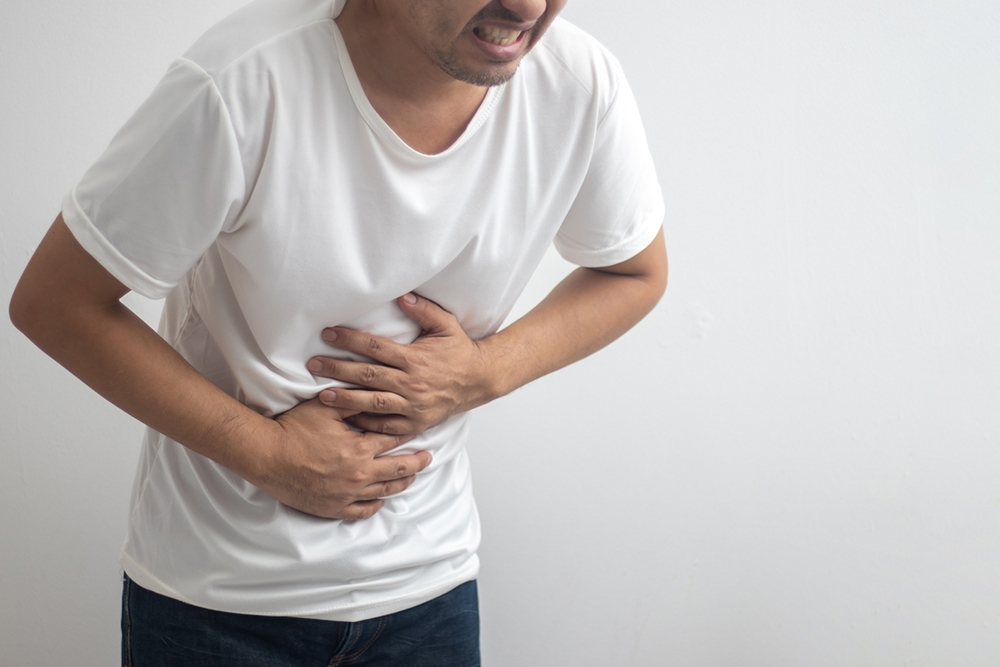Cholangitis – Types and Symptoms
Cholangitis is characterized by swelling and inflammation of the bile duct, a tube that carries the fluid from the liver to the small intestine. This inflammation can arise due to various underlying factors, based on which cholangitis is also categorized into different types. Cholangitis symptoms can vary depending on the specific type that a person has. Learning about the condition types and associated symptoms can provide valuable information about the condition and its management.

Types of cholangitis
There are mainly two types of cholangitis—acute and chronic. Chronic cholangitis is further categorized into different types, with primary sclerosing cholangitis and primary biliary cholangitis being the most common.
Acute cholangitis
This form of cholangitis is usually caused by a bacterial infection in the bile duct. In some cases, it may also develop due to blockage in the bile duct system caused by factors such as gallstones. Since the condition is acute, it can occur suddenly and last for a short time.
Chronic cholangitis
- Primary sclerosing cholangitis: This is a common form of chronic cholangitis that affects bile ducts located both inside and outside the liver.
- Primary biliary cholangitis: Unlike primary sclerosing cholangitis, this form of chronic cholangitis only affects the small bile ducts in the liver, leading to fluid and toxin buildup in the liver. Primary biliary cholangitis mainly affects women and can lead to severe issues like cirrhosis and liver failure.
Symptoms of cholangitis
The signs and symptoms of cholangitis can vary significantly depending on the specific type of cholangitis one is experiencing.
Acute cholangitis symptoms
1. Abdominal pain
A person’s biliary system (which includes the liver, gallbladder, and bile ducts) is located on the upper right side of the abdomen. So, those affected by this type of cholangitis can experience pain in the abdomen, especially in the upper right part of it.
2. Fever
Due to the inflammation of the bile duct, a person’s immune system can get activated, leading to the onset of fever.
3. Jaundice
When the bile duct gets swollen or inflamed, it can disrupt the regular flow of bile. This can lead to bile leaking into the bloodstream instead of flowing properly. When this happens, the affected individual may begin to notice a yellowish discoloration in their skin and the white part of the eyes (sclera), a condition called jaundice.
Pain in the upper right part of the abdomen, fever, and jaundice are three of the most commonly identified signs and symptoms of acute cholangitis and are collectively called Charcot’s triads.
4. Hypotension
Low blood pressure, or hypotension, is also associated with acute cholangitis. This symptom is considered a sign of shock, which develops when the infection enters one’s bloodstream.
5. Fast heart rate (tachycardia)
Like low blood pressure, a rapid heart rate can also indicate a sign of shock, signaling that the infection has spread into the bloodstream.
6. Altered mental state
Delirium, or a change in mental status, is also a symptom that can develop due to acute cholangitis. One may experience a state of confusion and a reduction in their level of awareness and alertness. In the case of cholangitis, confusion, cognitive impairment, and emotional disorientation occur because of bile toxins leaking into the bloodstream.
The symptoms of shock and altered mental status, along with the Charcot’s triads, are collectively called Reynolds pentad. It is important to note that the presence of these symptoms may suggest that the condition has worsened significantly and requires immediate healthcare intervention.
7. Change in the color of stools
Besides these common symptoms, one may also notice a change in the color of their stools. One possible indication is when a person’s stool appears pale or clay-colored. This discoloration occurs due to bile not being properly removed from the body due to a disruption in its flow. Besides, Ooe may also notice their urine turning dark in color.
8. Diarrhea
Individuals with acute cholangitis may also experience diarrhea or greasy bowel movements.
9. Lethargy
Due to acute cholangitis, one may also experience a severe drop in their energy levels. Extreme lethargy can be so overwhelming that it can be a real struggle to even muster the energy to leave the bed.
10. Nausea and vomiting
Due to the obstruction of the bile duct and hindered flow of bile, one may also experience nausea and vomiting.
11. Pruritus
Itching of the skin, also called pruritus, happens when the flow of bile is obstructed, causing it to leak into the bloodstream.
Chronic cholangitis symptoms
In most cases, individuals with chronic cholangitis may not experience any symptoms until the condition has advanced. But, as the condition progresses, one may begin noticing certain signs. Acute cholangitis shares certain symptoms with chronic cholangitis. These include pruritus (or itchy skin), fatigue, jaundice, and pain in the upper right side of the abdomen. Besides these, those affected with chronic cholangitis can experience other symptoms.
- Dry eyes
- Dry mouth
- Swelling of feet and ankles
- Hyperpigmentation (darkening of the skin)
- Pain in muscle, bone, and joints
- Bloating or a buildup of fluid in the abdomen
- Fat deposits in the skin around the eyes
- Fat deposits in the elbows, knees, palms, and soles of the feet
One must note that in the case of cholangitis, whether acute or chronic, the severity of symptoms may differ from one person to another. Additionally, many of these symptoms can overlap with those of other medical conditions and may not necessarily indicate cholangitis. Nevertheless, if one experiences any of these symptoms, seek healthcare attention as soon as possible and undergo a thorough examination.















